The Summer I Learned to Ride a Bike
Salt Lake City, UT, 5 September 2014 – The summer of 2014 will go down in my personal history book as the summer I learned how to ride a bike. Not that I didn’t already know how to get started, balance, and pedal without falling over at every corner, but rather I learned new skills that improved my performance. Until this summer I’d been riding the DeSalvo for almost 9 months and had plateaued. My Strava segment times were stuck in neutral and riding was becoming a chore.
You might remember I had a love-hate relationship with Strava but have since learned to embrace the data collection and comparison features of the app. I no longer, mostly, get annoyed when I compare my segment times to other riders although there will always be that one virtual competitor whose segment improvements irk the crud out of me. But no matter how much I compared or how much I thought I was trying my riding was going nowhere.
Being on the DeSalvo means I don’t have to have a relationship with anyone but the bike. The bike doesn’t complain or tell you what you’re doing wrong. The bike usually takes what you give it and makes you a better person if you take care of it. As I’m sitting here writing I realized this is no different than any other relationship. But I’ve always been a little one-off when it comes to personal relationships. I usually have a difficult time starting a conversation and even harder time staying interested long enough to hear the end of a story. And because of this I’ve had a difficult time making and keeping friends. Greg has pushed me to find people to ride with in order to improve my cycling skills. But for a loner like me the thought of asking someone to ride with me was scarier than open-heart surgery. Though I’ve had chance meetings with many people while riding I’ve never felt a strong desire to ask them for their contact information so we could ride together. The nearest I’ve ever come to teaming up with a group of riders was after an invitation to ride up Emigration canyon with a group of people who meet every Tuesday and Thursday morning. Emigration Canyon Road is the place every SL,UT rider cuts their proverbial teeth on hill climbs. Most Saturdays the canyon is bustling with every style and experience level of cyclists, which is why I tended to avoid riding there. The day I almost got the nerve to go out and ride with the Tuesday/Thursday group I decided to leave very early in the morning, before 6 am, so I could do the canyon without any competition. I didn’t want anyone knowing I owned a pricey bike but was only a mediocre rider. Thus my life as a vampire in Emigration Canyon began most days before 5 am.
Because the canyon is such a popular bicycling destination an unofficial sub-30 minute Strava milestone exists for the segment. For many cyclists, getting to the top of little mountain summit within 30-minutes is akin to reaching the North Pole. And as long as I’ve used Strava to gauge my riding proficiency that goal has been in the back of my head — only in the back of my head because no matter how hard I thought I was trying I couldn’t do the ascent in less than 32:30.
Since I didn’t have the nerve to find a riding companion I’ve used Strava to find them virtually. I’ve tried not to only follow people I know as friends but I’ve also included people who I knew were better riders than me so I had lofty goals to pursue. I wasn’t so jaded that I thought I’d ever be as good as they were, but these virtual competitors were there egging me on to try just a little harder. Which is how we get to June of this year.
Early this year, I started following a rider, A.K., on Strava who is a significantly (perhaps not so “significantly” anymore, but we’ll get to that) better climber than I am. And like any good follower I gave him Strava “Kudos” for every ride he did. He must have noticed and then done some searching on Facebook for my profile where he “liked” all of my posts about same-sex marriage and my relationship with Greg. So when he invited me to connect on Facebook I couldn’t help but wonder whom this guy was. We live in Utah, after all, so the chances of meeting someone who approves of our alternative lifestyle and who rides a bike are slim, though perhaps not improbable. I did what any curious person would do and accepted his Facebook friendship. Then, after complementing A.K. on his riding skills, I asked some general questions about his belief system. No red flags popped up and he was easy to communicate with, as much as texting is considered actual communication these days. Then, because I was a bit emboldened by the fact A.K. wasn’t uptight about my living arrangements, I asked if he would be interested in riding one day. He may have been a bit apprehensive and certainly was not interested in riding before the sun was fully up in the sky, but he accepted my request.
The day we met to ride A.K. asked me how we knew each other. I quickly ran down the Strava and Facebook connections to get to where we were standing on the side of the road at the mouth of Emigration Canyon. After I finished connecting the dots, he said, “Huh,” and then started talking as if we’d known one another for years. We clipped into our pedals and started up the canyon. A.K. told me about his racing and his philosophy about riding and he started working on making me a better rider. For the most part this happened without my even realizing I was improving. On our first few rides I tried to absorb everything I heard and remember everything I saw him do.
The first thing A.K. told me was to lose the 11-25 cassette. Being situated in the intermountain west, the geographic area between the Rocky Mountains to the east and the Sierra Nevada range to the west, SL,UT, I learned, is not the place for manly feats of gear mashing on an 11-25 tooth cassette. The funny thing is years ago, the first thing I did to upgrade my bike was to remove the 11-28 cassette and put on a more manly 11-25. Then I spent four years mashing gears to climb every hill I could find. Suddenly, I felt like a fool but quickly understood A.K.’s reasoning, which goes along with the second part of learning how to ride.
By our second ride I was no longer climbing Emigration Canyon in the large chain ring. I learned to increase my cadence by pedaling in the small chain ring and a larger gear. A few weeks into riding and my cadence was nearing 90-100 rpm as we climbed the canyon. I realized when we reached the top of the canyon that I was not completely exhausted from mashing gears. On the way down the canyon I noticed almost every rider heading up was doing exactly what I thought was the right way to climb.
Having learned the basics of gearing and cadence my tutor changed tack. As we rode he picked a speed slightly faster than I was used to riding and would continue talking as if I was riding next to him. I quickly learned if I wanted to be part of the conversation I would have to speed up. He never pushed hard enough to completely wear me out but I could sense when our speed increased. When we ride together I keep my Garmin set to any screen other than the speed because I find I obsess over my speed rather than focusing on my riding.

I also learned to save some energy for the end. Before I realized what A.K. had said made perfect sense, many of my high energy rides started out with a bang and ended with a bonk. I usually had nothing left for the end of the hill climb or the end of a long ride. Soon, I was wistfully pedaling up hills, my legs spinning gleefully and painlessly to the top. I found I had extra energy to do one last hill or even one fast race downhill. I also learned to get up out of the saddle for the last push to the finish and to get in the drops on every downhill. And I learned to eat. I now have at least one energy bar on every ride and usually at least two bottles of water. I have more energy and more fun on my rides.
More importantly, I learned a little about nurturing relationships outside of my personal relationship with Greg and the importance of balance. My outlook was so positive on a recent ride I told A.K. one of my goals by the end of the year was to finish a sub-30:00 Emigration Canyon climb.
Last week I hopped on my bike and pedaled up to Emigration Canyon alone after work. I was feeling pretty good about my riding and thought it might be fun to see just how much I’d learned and how much I’d improved. As I entered the canyon I put my head down, hands in the drops and took off. As I sensed the grade shift I shifted up and down with the flow of the land. Suddenly I realized I was further into the canyon than I expected to be. I told myself not to give up and to maintain my pace as I reached the last hairpin turn. I’d tried to reserve a little for the last climb, then got up out of the saddle and gave one last push to the finish. As I started to go down the backside of little mountain summit I noticed the time on my Garmin said 56:04 and realized I may have come close to my sub-30:00 goal. Then, for a split second I thought how pissed I would be if I was one or two seconds short. But in the end, after seven weeks of summer school training and bike riding with A.K., I had achieved a goal I’d never really believed I was capable of achieving. Just to make sure this wasn’t a fluke, I did the same ride again finishing within 3 seconds of my personal best time. Because of A.K.’s tutelage and his patience, I had become a much better rider.
In the end, the most important lesson I learned from this guy whose life was forever altered by spending several excruciating seconds as the hood ornament of a car that drove into his path is no matter what life throws at you never give up.
Rockwell Relay

Rockwell Relay image from http://rockwellrelay.com/moab-st-george/
24 April 2014, Salt Lake City, UT – Yet another Notified Body audit at work ends relatively successfully for the company that gives me money for things I do for them so I can buy bicycle gear. I have been remiss in my posting lately because we have been tearing out our old kitchen to redo the floors of our home, traveling to Boston for spring break, and catching some head cold or virus that knocked me down. I rode today for the first time since Sunday. This year has been one of the worst for miles ridden since I started riding a road bike four years ago.
The latest exercise theories say a rider should train hard and rest harder. I’m hoping this is what’s happening to me lately since today Greg and I signed up with a team to do the Rockwell Relay, a 527 mile relay race from Moab to St. George, Utah, in June. Aside from training for the MS 150 rides which I’ve done for three year’s straight, this will be the longest ride of my relatively short cycling career. The ride is broken into twelve approximately 50-mile segments with each 4-man team riding three legs. Each leg has its challenges.
Although I have not been on the bike much lately I noticed today on my short ride that muscle memory is set and I was riding at a good clip for most of the evening. I’ll keep you posted on my training progress.
Making New Friends at NAHBS
23 March 2014, Charlotte, NC – NAHBS is certainly the place to experience the most stunning custom and handmade bicycle innovations you’re not likely to see at your local bike shop. And it’s a great place to meet some of the giants of the industry like Tom Ritchey and Chris King who manned their booths during the recent show in Charlotte.
But the handmade bicycle business is about more than just the bikes. The annual NAHBS show recently ended its tenth edition gathering custom bike aficionados from across the globe for three days of bicycle bling. As much as each of the builders at the show is an artist with a unique and different perspective on bicycle building aesthetic they are also very much alike. If you took a moment to pause on the show floor this past week you would have hear the unmistakable clamor of community.
Although the bikes are the main focus of the show something more important happens in this tight knit community of artisans; new friendships are made and old friendships are rekindled both on the show floor and at the parties after day’s end.
NAHBS sponsors team up to put on some of the best parties in town during the show weekend. This year’s NAHBS fell on Saint Patrick’s day weekend, a fitting backdrop to Shamrock Cycles green clover-draped cross disc show bike, in Charlotte where the worlds largest pub crawl highlights the Luck o’ the Irish festivities.
And not far from the uptown Charlotte St. Patty’s crowds NAHBS attendees put on a hoedown of their own sponsored by Oskar Blues Brewery and a local fiddle band.
This year Greg ran the photo studio where a show bike was set up and photographed every six minutes. This is a daunting task for the best photographers but with the help of an army of dedicated volunteers the bikes were photographed and sent back to their booths unscathed in record time. Seasoned bicycle race Photographer Weldon Weaver worked closely with his volunteer crew to create the official photoset of award entries.
If you love bicycles and are even remotely interested having a chance to be around some of the best custom bicycle handwork in the world we encourage you to head Louisville in 2015. If you go, remember to take a moment to meet the builders as well as ogle their bikes. You’ll quickly learn this is a gathering of artists and a community of people who’ve come together for ten straight years to share their visions. In the end NAHBS is as much about the people and having fun as it is about bicycle innovation.
Its a place where friendship and community come together to share bicycle dreams.
Mavic – The French Chefs of Bicycle Components
16 March 2014, Charlotte, NC – Just as a Michelin three-star French chef would never allow an imperfect plate to leave his kitchen, Mavic, the storied French bicycle component manufacturer, releases no new product lines before perfection is achieved. According to the Mavic representatives at NAHBS Charlotte the company is not interested in being first to market when new product trends appear, rather they want to bring the product to market when their version is perfected. This is the company’s mantra today although Mavic has many firsts in its long history including the1999 debut of the first wireless electronic shifting group. Mavic’s recent work focused on improving the braking track of their elite level carbon road wheels to improve braking and temperature modulation.
We asked about the trend toward road disc brakes, a technology that seemed to step back here at NAHBS after SRAM’s recent hydraulic brake recall, an early stumble that we’ve predicted will move the technology of hydraulic bicycle braking systems forward in the long run. Mavic told us they were waiting for the market to settle but disc brake wheels from France are soon to be a reality. And like dining guests at a Michelin-starred French restaurant we are waiting patiently for perfection to be served.
NAHBS Charlotte – Here we Come
11 March 2014, Salt Lake International Airport – Checked in, through security and waiting to board the flight to CTL for NAHBS. We packed our bike shoes on the oft chance we have an opportunity to get on a bike one morning during the show, but We’ll be mostly working with the show directors helping with all of the behind the scenes work that goes into the show. Can’t wait to get out of SL,UT for a week.
TRP HYRD Brakes – The Definitive Guide – Updated
Salt Lake City, UT, 21 November 2013 – By now you’re keenly aware that I’ve had a road bike custom built by Mike DeSalvo spec’d with TRP HY/RD disc brakes. I’ll discuss the frame, which is, as one of my LBS’s race-experienced employees said, “the most beautiful bike I’ve ever seen,” in a separate post.
This bike turns heads and I can’t wait to tell you about it. But first, I want to discuss the brakes since I’ve been hard pressed to find any user experience information about the actual performance of these brakes aside from the usual glowing product reviews.
Tektro Racing Products (TRP) has an office in Ogden, UT where I believe much of the design work originates. TRP make aftermarket and OEM brakes under two product lines: Tektro which you’ve probably seen on bikes outfitted with mid-tier Shimano or SRAM component groups, and TRP the company’s after-market performance racing line. I was first introduced to TRP brakes when I began planning my foray into buying a custom titanium road bike last year. The buzz about disc brakes on road bikes was just beginning to build steam at the same time the rumors of Shimano and SRAM’s impending road disc brake plans were speeding over the Internet. There’s no doubt the technology is quickly filtering to road bikes as more manufacturers introduce disc brake versions of their bicycles. Anyone planning a build has few options for hydraulic disc brake calipers and fewer if they’re interested in mechanical shifting.
During my investigative work I happened upon the few articles that exist about TRP HY/RD, “Hight Road”, hydraulic road disc brakes and was instantly drawn to the seemingly simplicity of the design.
Let me break off to a quick tangent to discuss the name HY/RD. One of the few criticisms I have for these brakes is their name. Using the name HY/RD in the title of this article in WordPress will be impossible because of the slash. I’ll have to use either HY RD, HYRD, or HY-RD, none of which is correct. This I’m sure makes finding information about these brakes even more difficult for the less tech savvy among us. I suggest TRP change the name quickly and officially to something more Internet-friendly like HYRD.
HY/RD disc brakes are the only, or perhaps one of the few, hydraulic disc brake designs I’m aware of with the hydraulic cylinder integrated into the calipers. This makes the calipers heavier obviously, but it also eliminates the need for the shifter/brake handles to integrate the hydraulic piston at the handlebar. There are numerous mechanical disc brake choices available as well but the advantages of hydraulics including better modulation, dual piston and self adjusting pads are worth the added weight in my opinion.
Mechanical shifting systems take up most of the space in the shifter handle so there’s little room for placement of the hydraulic fluid reservoir and piston eliminating the ability to retrofit older component groups with hydraulic disc brakes. With newer electronic shift systems microswitches replace cable guides leaving room for the hydraulics which is how the big-three component manufacturers are able to design hydraulic into their newer electronic groups.
This also means the bike has a three foot hydraulic line running the length of the frame from the shifters to the calipers. I can only imagine what would happen if a rider falls and breaks one of these lines on their SRAM DOT-filled hydraulic brakes. I think I’ll stop there leaving the potential for litigation over the cleanup of the EPA Superfund site from spilled DOT 5.1 fluid on Federal land to the Nature Conservancy attorneys. But you can imagine the mess this would create in any crash where the hose was compromised.
TRP took the high road in their HY/RD hydraulic disc brake design by using mineral oil that’s not nearly as potentially harmful to work with as DOT 5.1 brake fluid. The caliper body weighs 195 grams per wheel. Shimano 6700 rim calipers weigh 317 grams for a set, 73 grams lighter than HY/RD. Only the weeniest of weight-weenies will likely notice the 2.5 ounce difference. The brakes can be connected to any mechanical cable actuated brake set. Of course, you need a bike with the correct caliper mounts and hub spacing.
The HY/RD brakes come standard with a semi-metallic pad designed to be a good all around brake for general use. TRP says the pad, “compound works well in dry conditions but may wear quickly in wet/muddy conditions.” Since I tend to enjoy hill climbing and the requisite downhill portions of my rides I’m not sure these stock pads will be the best choice for riders who push the limits of their cycling endeavors like I do.
I wanted to understand how the HY/RD brakes felt when they were used in less-than-optimal conditions. So, on what will be standard ride weather for the next several months—wet roads, windy, with the potential for a cold mix of rain and snow blowing across my face—I set out on a ride to test my new brakes. There’s a new hill I’ve added to my usual 20-mile loop that starts out steep and tapers off for a half mile before another steep climb to the top of a cul-de-sac. The end point has an inspiring view overlooking the valley that makes me want a home upgrade as well.
On the ascent, the brakes became sufficiently wet so that on the descent they took a few seconds to start to grab, a sensation I fully expected. I used the rear brake for testing so that should any problems arise I had the full force of the front brake to prevent a disaster. After coasting down to the steeper of the two grades I held the brakes slightly for a good part of the steep descent. Half way down I noticed the brakes were not holding the bike back and I had to squeeze harder and apply more front brake to get the bike to stop at the bottom of the hill. I now understand what brake fade feels like. Its not much different than the feeling you get with rim brakes in wet weather as you reach a stop sign while you’re hoping the bike will stop before it slides into oncoming traffic. The difference is if you’re not riding the disc brakes all the way down a hill you’ll have more than enough power to stop the bike whereas with rim brakes you’re hoping the rims dry out and the brakes hold before you reach the corner. The disc brakes give a rider solid modulation to slow the bike down quickly on a descent even when wet which is one of their general advantages over rim brakes in the rain.
Many early reviewers of HY/RD have said they are able to brake later heading into a turn. For the novice rider, I’m certain what they mean is you no longer need to coast riding the brakes into the turn to slow down. As a matter of fact, after three weeks with the DeSalvo I’m learning I have to employ a completely new braking routine, one that incorporates much later braking than I’m used to with less coasting to stops. This tends to be a bit scary for less experienced riders who don’t feel as secure riding brake-free for a good portion of a downhill ride. As with learning to ride a bike in general, though, we learn to change our behavior to suit the circumstances; this is how things will be, I can imagine, for those transitioning to disc brakes.
So, now that we understand even with less than optimal brake pad material you can stop a disc road bike on a dime heading down a steep hill in the rain, what brakes would be better suited for this riding style?
HY/RD brakes, according to TRP, use the same pads as Shimano Deore 525 brakes. The pads can be either M08 or M05 models. The difference in Shimano terminology is the M05 pads are slightly thinner and in the case of Shimano brakes cannot be interchanged with M08 pads. I would imagine this is not an issue with HY/RD because the hydraulic fluid is constantly being topped off in the brake cylinder as the pads wear. This is an advantage over mechanical disc brakes that have to be adjusted manually, and another reason I chose to outfit my bike with HY/RD brakes.
The most informative website I was able to find during my research for this article was from the people at Disco Brakes.com. They have what I found to be one of the most informative comparisons of disc brake pads on the Internet. The comparison here comes directly from their website since there’s little need to mess with perfection.
Semi-Metallic Compound
- Also known as Compound S (Semi-Metallic)
- Semi-metallic compound for good wear in all conditions. Medium density with consistent wet and dry performance and good grip.
- Advantages: Cheap, Above average all around performance
- Disadvantages: Grippier and longer lasting pads are available
- Suitable For: Everything
- Conclusion: Best Value
Professional Grade Black Ceramic Compound
- Also known as Compound C (Ceramic Pro)
- These soft organic ceramic fiber disc brake pads are carbonized. The ceramic compound insulates the brake system from friction heat up to 400oC. The result is a very powerful, quiet pad with extremely low heat generation which all but eliminates the chances of brake fade.
- Upgrade on original fitted pads
- DIN 79100 Standard Approved
- Organic Compound contains no metal material
- Reduces damage to rotor
- Carbonized compound reduces brake fading
- Ceramic Fiber insulates brake system from friction heat
- Advantages: Excellent grip, Low noise, Low heat, Consistent in all conditions
- Disadvantages: Short life span unless rider is light on brakes
- Suitable For: DH, Dry XC, Ti Rotors
- Conclusion: Best Performance, Short Life
Metallic Sintered
- Also known as Compound T (Sintered)
- Superior power in all conditions
- Long wear pads, great for DH or XC
- Consistent braking power in the wet
- Almost unaffected by rain and snow
- Copper back plate
- Advantages: Better performing and longer lasting than most pads
- Disadvantages: More expensive than medium pads
- Suitable For: XC, DH (low brake use), All weather conditions, Mud
- Conclusion: Solid Pads and Best All Rounders
Red Ceramic Compound – Hard
- Also known as Compound D (Ceramic Hard)
- Harder than ordinary pads. This is the highest density, hardest, ceramic compound for performance and longer lifetime. These organic disc brake pads contain a high amount of ceramic fiber, which insulate the brake system from friction heat up to 400oC.
- Advantages: Better performing and longer lasting than medium pads
- Upgrade on original fitted pads
- DIN 79100 Standard Approved
- Organic Compound contains no metal material
- Reduces damage to rotor
- Carbonized compound reduces brake fading
- Ceramic Fiber insulates brake system from friction heat
- Advantages: Longer lasting than Black Ceramic pads
- Disadvantages: More expensive than Black Ceramic pads and not as grippy
- Suitable For: XC, DH (low brake use)
- Conclusion: Advantages of a Ceramic Pad with Longer Life
Kevlar Compound
- Also known as Compound V (Kevlar) Contains Kevlar® brand fiber developed by DuPont
- Kevlar is a high strength synthetic fiber which dramatically improves the performance of these medium density pads and gives excellent braking power
- Advantages: Better performance than semi-metallic
- Disadvantages: More expensive than semi-metallic and known to wear out faster in bad weather
- Suitable For: XC, DH
- Conclusion: Performance Advantages of Kevlar
Other Factors
- Low Noise: The black ceramic compound C is thought to be virtually silent
- DH: Black Ceramic pads are great for Downhill as the ceramic compound insulates the caliper pistons from heat build up so reducing the likelihood of brake fade.
- Rotors: All of these compounds can be used with any rotor. Ceramic pads cause less damage to rotors than metallic compound pads.
- Titanium Rotors: We recommend black ceramic compound for titanium coated rotors, as it contains no metal, so will reduce damage to the rotor. The coating on titanium plated rotors is extremely thin (often just a few microns), so will ultimately wear off no matter what pad you use, but ceramic pads will prolong their life over pads containing metal.
My plan is to order a set of the Professional Black and a set of Kevlar pads from Disco Brakes to test during the crisp cold days of our forthcoming Utah winter cycling season. One or both should be better suited for my style of riding than the stock TRP pads.
I’ve reached a point after a few weeks of almost daily riding my most beautiful bicycle in the world in dry and wet conditions that I’ve finally been able to stop thinking about the brakes and the bike and how it rides and focus on the ride itself. I find myself realizing, as my braking pattern slowly transitions to less coasting stops, I enjoy the strong finite stopping power of the HY/RD brakes and the fact I’m not grinding away at my $1,000 wheel rims every time I brake. And the more hours I spend on a disc brake equipped bicycle, the more I am convinced this is the wave of the future for bicycles. As with any innovation as time passes the innovation becomes the standard. You can expect disc brakes to be around for at least 100 years before the next technology takes over; after all bikes have changed little in the last century, much slower than every other technology we’ve fully embraced.
Mineral Oil Brake Fluid Comparisons:
http://www.peterverdone.com/archive/bikemineraloil.htm
Other Notable Reviews:
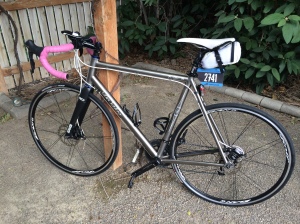

















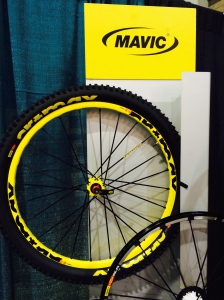
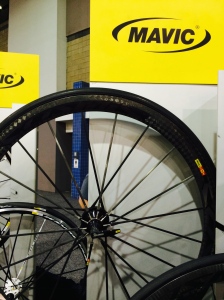
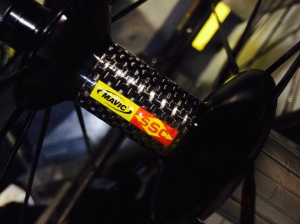
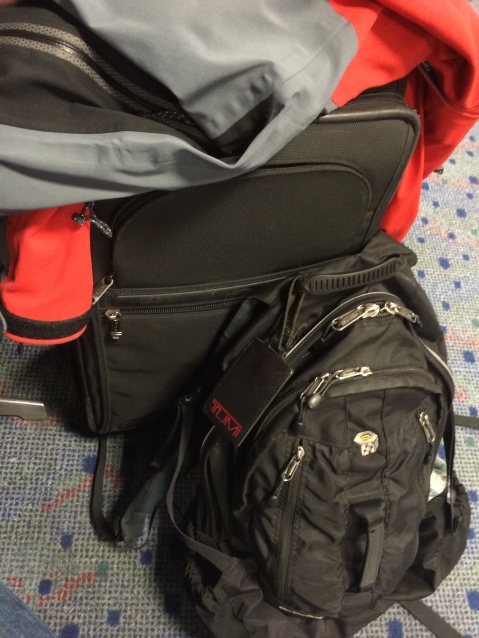
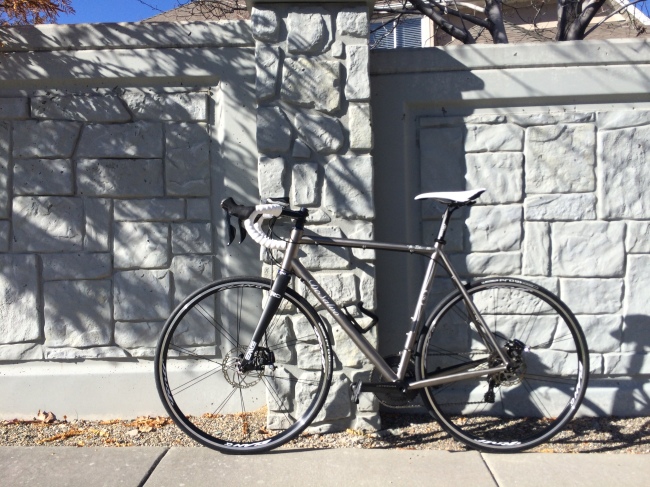
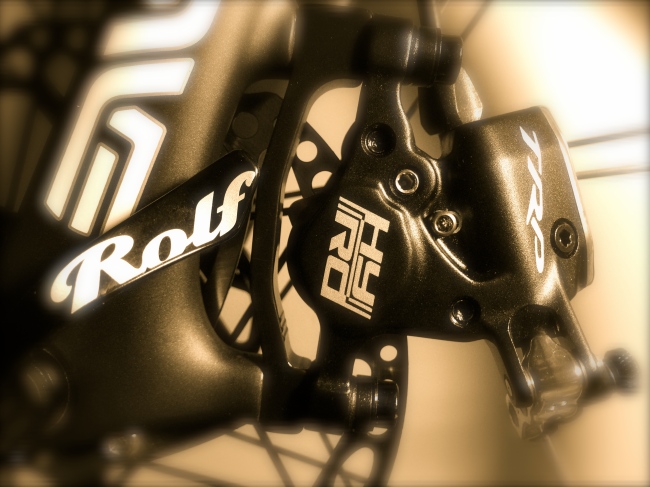
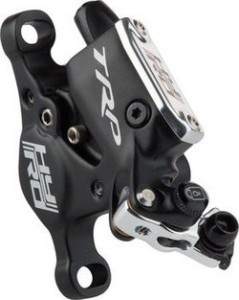
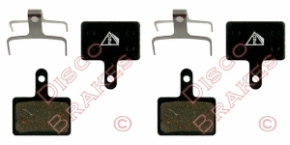
Recent Comments